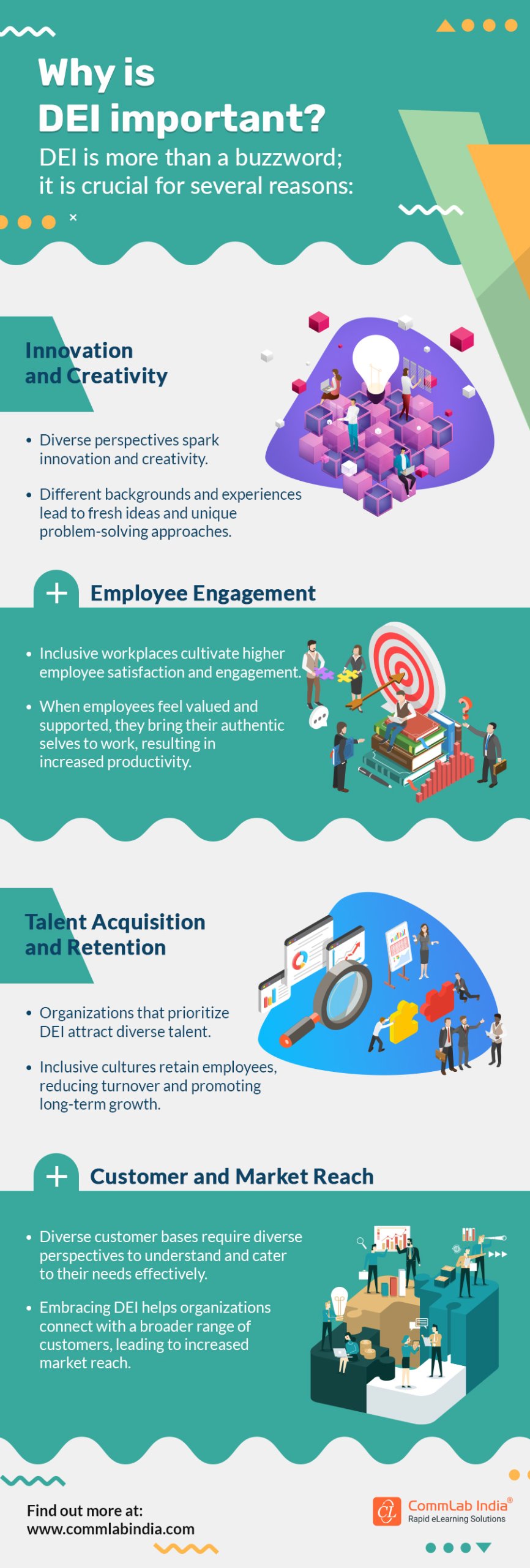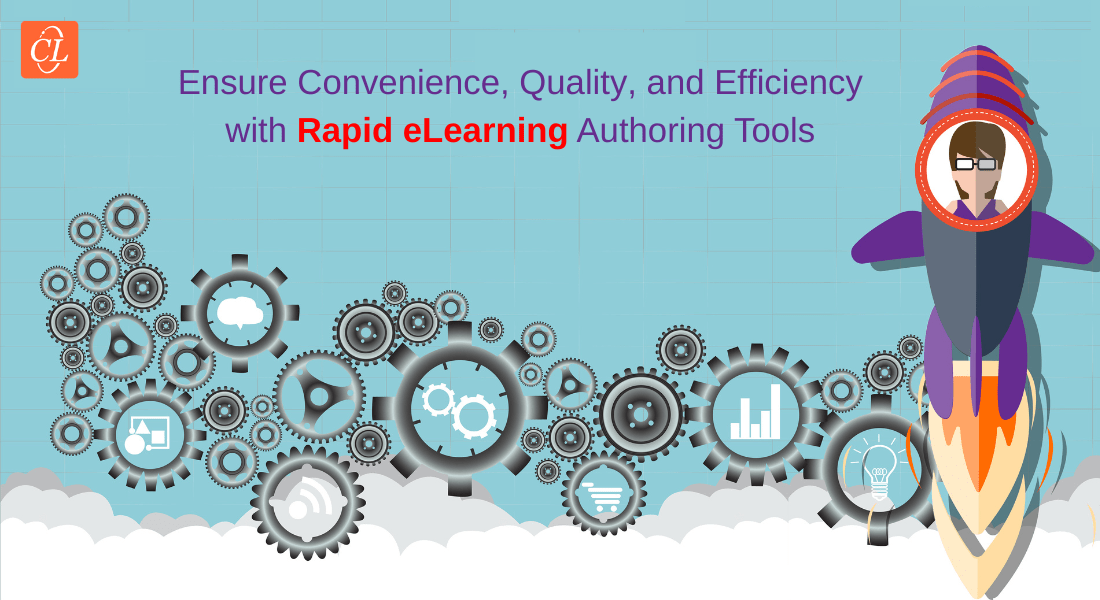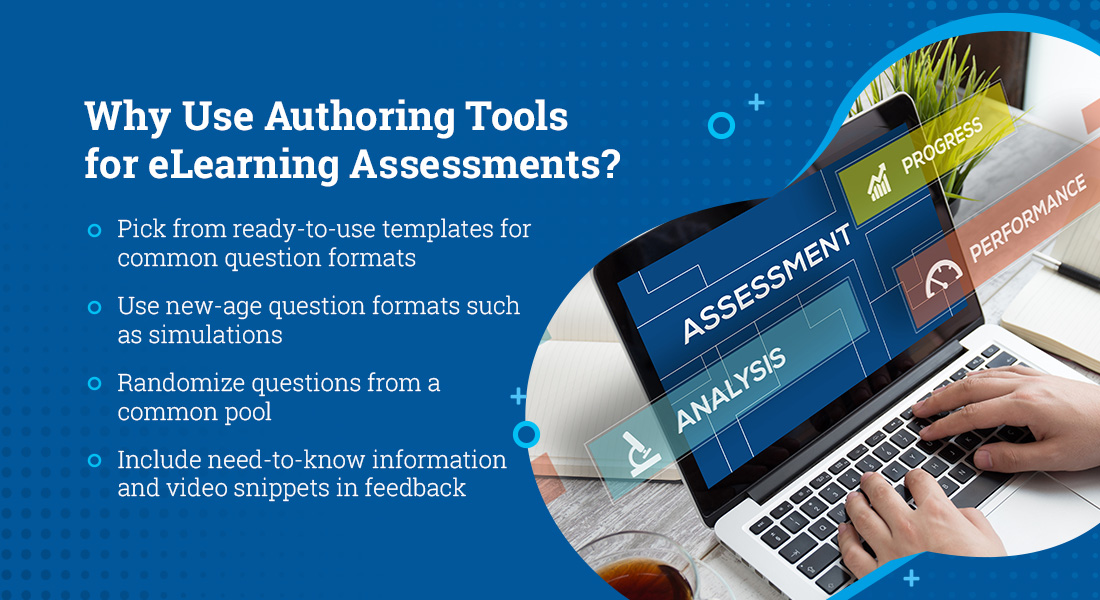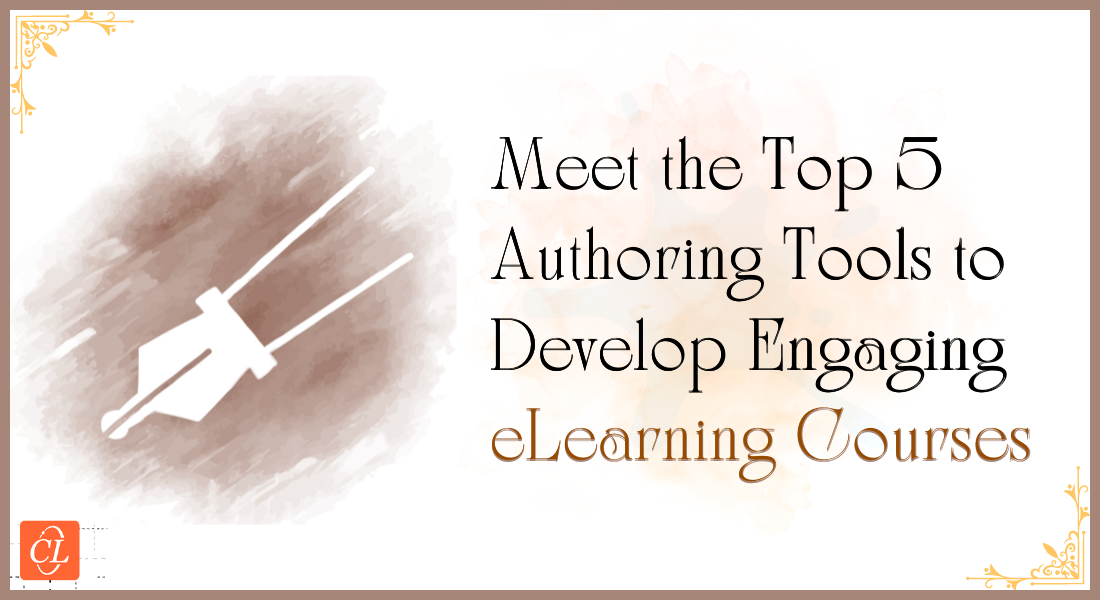How Custom eLearning Meets the Needs of the Modern Workforce
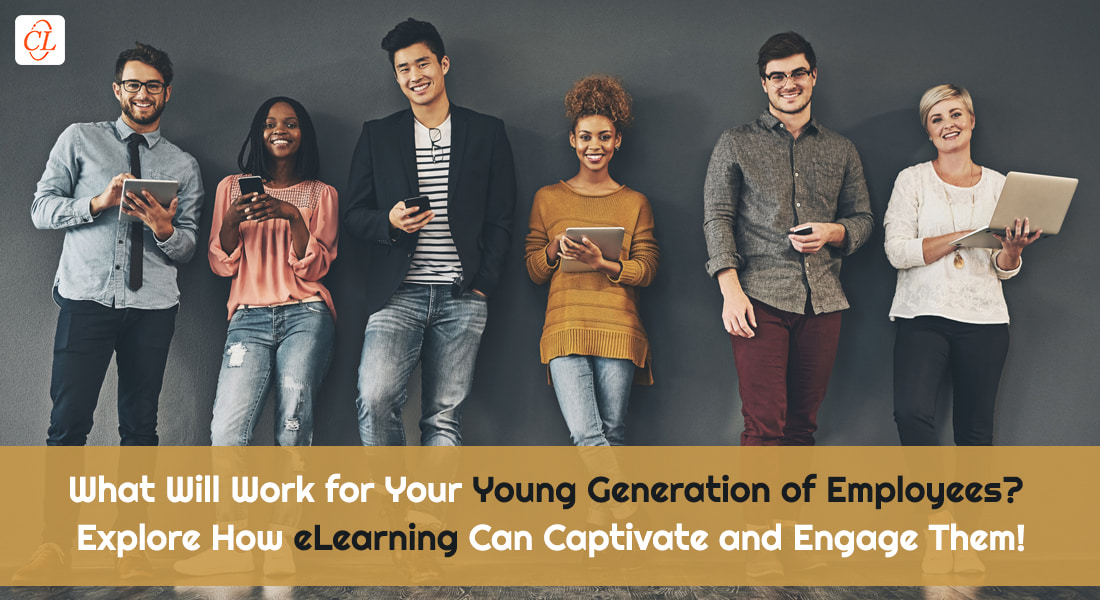
In a world where skills evolve as rapidly as technology, traditional, one-size-fits-all employee training and development programs simply don’t cut it anymore. The modern workforce demands personalized, dynamic learning experiences that align with their individual goals, keep them motivated, and deliver measurable outcomes. Generic training fails to address the diverse challenges employees face today, leaving skill gaps unfilled and potential untapped. Custom eLearning offers a powerful solution—tailored content that adapts to the specific needs of learners, enhancing engagement, boosting productivity, and ensuring your team stays ahead in an ever-changing landscape. So, is custom eLearning the answer to staying ahead?
Let’s find out!
→ Download eBook: Corporate L&D Trends 2025 – Get the View from the Trenches
Table of Content
- What does the Modern Workforce want from eLearning Courses?
- Why Custom eLearning is Ideal for the Modern Workforce?
- How to Create Custom eLearning that Clicks with Today's Workforce?
- How Does Custom eLearning Adapt to Emerging Trends?
What does the Modern Workforce want from eLearning Courses?
Do You Want to Find Out What the Modern Workforce Expects From eLearning Courses?
Here’s a few key aspects for you to consider:
- Empathy
- Collaboration Opportunities
- DEI Content
- Just-in-time Information
- Hands-On Learning
- Material Rewards
- Multiple Assessment Techniques
Today's workforce seeks corporate training that goes beyond a one-size-fits-all approach. They want eLearning that’s tailored to their needs—something engaging, practical, and relevant to their roles. Custom eLearning does just that. It’s built specifically for your team, delivering the right skills and knowledge in a way that sticks. Let’s dive into what modern employees are looking for and how personalized strategies can make all the difference.
Here’s a few factors the modern workforce desires from their eLearning course design:
1. Empathy
Society programs modern employees to relate with one another and obtain a sense of belonging. Your employees are more likely to respond better to understanding and affection. You need to think like advertisers and leverage the power of empathy to ensure your training content speaks to your learners’ hearts and you should forecast their needs and wants.
Modern L&D professionals, including instructional designers and eLearning developers, must strive to influence employees by creating a story-based narrative for eLearning courses. You can include a main character or avatar to guide them through their learning journey.
Adding these narrative elements gives employees the motivation to continue learning, especially if you design avatars they can identify with, such as managers, coaches, and experts. You also want to make sure the narration is as natural as possible. The best way to do this is by using emotional responses and humor, so you don’t sound machine like.
2. DEI Content
With remote hiring and onboarding becoming the norm around the globe, employees want companies to include DEI (Diversity, Equity, and Inclusion) into their learning strategy and avoid using references or terminologies that only a certain group of employees can understand. Therefore, you need to create training content that caters to global learners.
Steer clear of anything that your learners of diverse races, religions, and cultures might consider offensive. You can use eLearning authoring tools to further fuel your DEI initiatives and enable eLearning translations. This way, you also quicken your onboarding and your training processes.
Discover how Diversity, Equity, and Inclusion (DEI) create lasting impact in your workplace.
3. Just-in-Time Information
Self-paced learning is a unique quality of eLearning enjoyed by the modern workforce. However, they’re not looking to go through arduous, detailed content to get the information they need. Therefore, they look at Google to access content swiftly. Watch out for employees picking up inaccurate information online and getting confused.
You need to address such issues in your eLearning design process. The best way to do this is by developing and updating microlearning videos, webcasts, and infographics and creating content that your learners can access anytime, anywhere just-in time!
4. Hands-On Learning
The modern workforce wants their organizations to make learning a part of the workflow. This way, they don’t have to set aside time to upskill and enhance performance at work. Considering the pace of operations in the post-pandemic landscape, today’s learners prioritize their work-life balance. Organizations need to understand this and enable transitional or hands-on learning.
If you want to train your staff on how to use a new software solution, then you need to host VILT sessions. You can also complement these sessions with self-paced eLearning courses that employees can use to get answers and improve their digital literacy.

Corporate L&D Trends 2025
Get the View from the Trenches
- Win with AI
- Design for the agile workforce
- Unlock scale, volume, quality
- Make an impact
- Much more
5. Collaboration Opportunities
For many years, the most significant disadvantage of eLearning has been isolation. However, with the growth of blended learning and social learning, trainers have used VILT sessions, microlearning videos, self-generated user material, and interactive elements to provide employees opportunities to collaborate.
Therefore, your eLearning design should consider that modern employees no longer just want quality training content. They want to collaborate with their peers.
6. Material Rewards
The modern workforce no longer cares for extraneous rewards. Instead, they want their learning to provide tangible benefits and material rewards.
So, when employees get into a corporate training program, they expect it to have a manifest purpose. They expect their training to prepare them for a better-paying role and one that helps them improve their productivity so they can get a promotion. If you host a lengthy, boring session on policy updates, then your learners won’t be interested unless those changes affect their jobs.
The eLearning design process should answer the question “What’s in it for your learners?” because the modern workforce wants to be valued. Your program should help them see the big picture and it must motivate them to improve their abilities with attractive and achievable incentives.
7. Multiple Assessment Techniques
While some employees love quizzes there are others that might enjoy scenario-based sessions, such as mock trials. As no two learners are alike, you cannot rely on a single eLearning assessment strategy to determine learning outcomes or training effectiveness.
Ready to create eLearning assessments that engage and truly measure learning? Let’s dive into strategies that make them effective and immersive!
You need to segment your learners carefully and explore a variety of assessment tools to see which ones work best and that cover all learners. Ideally, your mix should contain both visual and audio components, such as games, branching scenarios, online group collaboration projects, and task-based simulations, to name a few. These qualitative assessment tools are easy to design as long as you have an effective eLearning authoring tool, like Articulate Storyline 360 and iSpring.
Why Custom eLearning is Ideal for the Modern Workforce?
Let us see why custom eLearning courses score over catalog courses:
1. Content can be Better Tied to Specific Organizational Needs
The content of catalog online courses is generic and useful to meet the overall needs of the industry. For instance, off-the-shelf courses are effective in meeting requirements, such as imparting training on the MS-Office suite of applications, improving communication skills, and so on, which are common to all companies in any industry.
But, when it comes to meeting the specific training needs of your company, custom eLearning courses are a better option. This is because a bespoke eLearning course is developed keeping in mind the training needs of only your company.
2. Learning can be Aligned with the Company’s Brand and Culture
We all know that training programs of a company, aligned with its brand and culture, go a long way in imparting effective training. Catalog online courses cannot reflect your brand and corporate culture. This is because off-the-shelf courses are not built specifically for your company and you cannot change their look and feel or tweak their content.
On the other hand, bespoke eLearning courses are created exclusively to meet your needs. They can be customized to reflect your brand’s image and culture. For instance, you can use your company’s logo and brand colors in courses. Likewise, you can use the images of your people and offices, helping your learners connect effectively with the course.
3. Training on Business Processes can be Imparted very Effectively
It is a well-known fact that good training on business and industrial processes plays a key role in enhancing productivity levels. Off-the-shelf courses cannot be used to impart effective process training to your employees. No two companies follow the same business processes, and catalog courses do not reflect the unique processes followed by an organization.
However, a custom eLearning course can be used to meet your specific process training needs. For instance, you can deliver high-quality safety training on the processes followed in your company, using a bespoke course, as the course can be completely tailored to reflect your processes.
4. Assessments can be More Specific to your Organizational Context
Good eLearning assessments are one of the hallmarks of a well-designed eLearning course. They help you determine whether a training program has enabled your people to carry out their job duties efficiently. Assessments in catalog online courses cannot be used to evaluate learners on the specific knowledge and skills required by your company, in an effective manner, as they are not designed for the purpose.
Assessments of bespoke eLearning courses, on the other hand, are designed specifically to test your staff on the knowledge and skills needed to perform their work. Consider the case of SAP training, as an example. Your people need to comprehend the underlying business processes to execute them effectively using the system. You can build assessments in your custom course to measure how well your people have understood the processes and can implement them using the ERP software.
5. Learners will be More Engaged as the Training will Meet their Needs Better
Learners connect themselves with the online course if they find it relevant to their needs, and this goes a long way in ensuring they stay focused throughout the course. The content of a catalog eLearning course is not designed to meet the specific needs of your learners, and as a result, they may face problems in relating the content to their needs.
You will have no such problems with a bespoke eLearning course. The content of the course is fully customized to address the unique challenges faced by your workforce, and this makes it highly relevant to them. For instance, salespeople need training that can help them convince that their product provides the best value for the customer’s money. A custom online product training course can explain the superior features of your product, which the salespersons will find useful to justify its high price.
How to Create Custom eLearning that Clicks with Today's Workforce?
Six best practices you can adopt to make custom eLearning courses learner-centric:
1. Know Your Learners
Understand who your learners are, what they already know, and what they need to learn from the course. Find out about the education level of your learners, their level of knowledge of the subject being taught, and their goals in taking the course. This will help you recognize the performance gap between what they know and can do and what they need to know and be enabled to do.
Identifying the performance gap will help you determine what content you need to put into the eLearning course to close this gap and help learners know more and perform better, with the aid of this knowledge.
2. Use Learning Objectives to Determine what Learners Need to Know
The learning objectives should spell out what learners are supposed to know and should be able to do, once they complete the course. The objectives should clearly state, in specific and measurable terms, what the learner will achieve at the end of the course.
To make them learner-centric, ensure that they are relevant to the learners. So, assess your learners through surveys, questionnaires, or interviews. This will help you match learners’ needs to the objectives of your course.
The objectives should help learners understand what they will achieve at the end of the eLearning course, and if they are clearly spelt out, the outcome will be their motivation to learn and active participation in the learning process.
Having trouble crafting clear and impactful learning objectives? Let’s simplify the process with key steps to guide you!
3. Spell Out WIFM for your Learners
For learners, you have to spell out the WIFM or What’s in it for me? They need to know why they are learning something. To answer this, the learning objectives should tell them what they can expect from the eLearning course. The objectives should articulate the benefits of the course to learners, rather than its features.
4. Allow Learners to have Control over the Learning Process
Learners prefer control over their learning, including self-paced learning options and varied activities. Some may prefer videos or presentations, while others prefer podcasts or webinars. To accommodate different learning styles and knowledge levels, offer diverse formats and allow learners to skip or select modules based on their needs. Use a clickable course map for easy navigation, avoiding rigid, linear structures.
5. Provide Supplementary Learning Support
Job-aids, reference guides, and cheat sheets can be included as supplementary learning material which learners can easily access while they are on the job. This will provide them access to resources that will help them overcome challenges and solve real-world challenges. Supplementary support should provide targeted information on specific tasks, skills, or topics. This material should be accessible on mobile phones so that learners can access the material anytime and anywhere. There should be a mix of multiple resources so that they can cater to different learning behaviors and preferences.

Corporate L&D Trends 2025
Get the View from the Trenches
- Win with AI
- Design for the agile workforce
- Unlock scale, volume, quality
- Make an impact
- Much more
How Does Custom eLearning Adapt to Emerging Trends?
Staying ahead today means keeping up with constant change. For the modern workforce, this means learning solutions need to be flexible, engaging, and tailored to evolving trends. Custom eLearning makes this possible by adapting to new technologies, shifting industry demands, and diverse learner needs. It’s not just about keeping skills sharp—it’s about empowering employees to grow and thrive in a dynamic environment.
What’s the Impact of Emerging Trends on Custom eLearning?
- Caters to specific learning needs using Adaptive Learning
- Speeds up development through Rapid eLearning
- Identifies individual training needs using Artificial Intelligence
- Takes training to the next level using AR/VR
1. Caters to Specific Learning Needs Using Adaptive Learning
Imagine a classroom where the instructor guides every learner to meet their personal style of learning, needs, and interests. Won’t that lead to an effective learning experience? Well, this might be possible to a certain extent within a classroom setting but catering to the needs of every single learner is definitely not an easy task. But what if I say this is very much possible in custom eLearning? Well, it is! This is what adaptive learning is all about.
You might have noticed that most often the term ‘personalized learning’ is used synonymously with Adaptive learning. But in fact, both of them are different. While personalized learning is a broader term used for delivering content tailored according to learners’ characteristics and interests, adaptive learning is about using technology to monitor learners’ current progress and providing customized learning paths according to their need in real-time.
Watch this video to know more about adaptive learning.
2. Speeds Up Development through Rapid eLearning
Unlike off-the-shelf courses, custom eLearning development takes time, since custom eLearning is all about developing courses according to specific organizational requirements. Are you thinking you would opt for a catalog course rather than wasting time developing custom eLearning courses? Well, let this not bother you anymore.
Rapid eLearning has evolved considering the fact that the one thing organizations cannot compromise in the current era is time. Rapid eLearning is all about developing custom eLearning courses, which might usually take months, in just weeks, by minimizing Instructional Design and using rapid eLearning authoring tools.
Well, the first question that might pop in your mind might be, “But doesn’t that mean we compromise on the quality of the courses?” Not really. Rapid eLearning is all about:
- Saying no to those fancy additions (unnecessary interactivities, animations, etc.,) in courses which serve no purpose but consume time and instead, designing courses that are learner-centric, aligned with the adult learning principles, incorporate performance-based learning objectives, and assure assessments are aligned with these learning objectives
- Using authoring tools which offer of a lot of inbuilt features that facilitate the rapid development of eLearning courses such as Articulate Storyline, Rise, iSpring and others.
- Following an Agile project management process, i.e., making the entire process iterative, enabling the identification of challenges in the early stages of development, to avoid further confusions and delays.
Thus, rapid eLearning is the perfect solution to develop custom eLearning courses for your modern workforce – cut down on cost and time of development with zero compromise on quality and learner engagement.
3. Identifies Individual Training Needs Using Artificial Intelligence
The main aim of developing custom eLearning courses is to develop and deliver courses that can meet the needs of your learners. It is about identifying the performance gaps within your organization and filling up those gaps by providing the necessary training. This is usually done by conducting a Training Needs Analysis (TNA).
What if I say AI could identify your learner-specific training needs for you? Custom eLearning equipped with artificial intelligence is bound to make wonders happen. It can facilitate real-time questioning, improve accessibility of learners with disabilities, foster natural language processing, and the best of all: recognize the way a learner understands a concept and offer personalized learning for them.
AI algorithms can track the performance of an individual learner and alter their learning material to deliver the training they require.
4. Takes Training to The Next Level Using AR/VR
The best thing about custom eLearning is the fact that it allows the incorporation of a variety of strategies within the course that cater to a learner’s engagement. Constant developments in technologies have also given a wider access to incorporate them in eLearning. Two such technologies are Augmented Reality (AR) and Virtual Reality (VR).
Virtual Reality (VR) and Augmented Reality (AR) are revolutionizing eLearning by offering immersive, engaging, and safer training experiences. VR allows learners to perform high-risk tasks, like surgeries, in a virtual environment, catering to various learning styles while reducing cognitive load. AR provides practical applications, such as wearable tech for real-time data or magnified views for machine assembly. Together, VR and AR elevate training, enhancing motivation, engagement, and learning outcomes.
Discover how AR and VR can transform your eLearning experience and take learning to the next level with these 5 powerful strategies!
The Path Ahead!
The demands of today’s workforce aren’t slowing down, and neither should your training strategy. Custom eLearning offers a dynamic, tailored approach to help your team thrive. Buckle-up to ditch the one-size-fits-all corporate training approach and unlock your team’s full potential!
And as 2025 approaches, it's crucial to stay informed about the trends transforming workplace learning. Get your copy of our eBook, "Corporate L&D Trends 2025," to discover how customization, emerging technologies, and evolving strategies are reshaping employee training and development.



